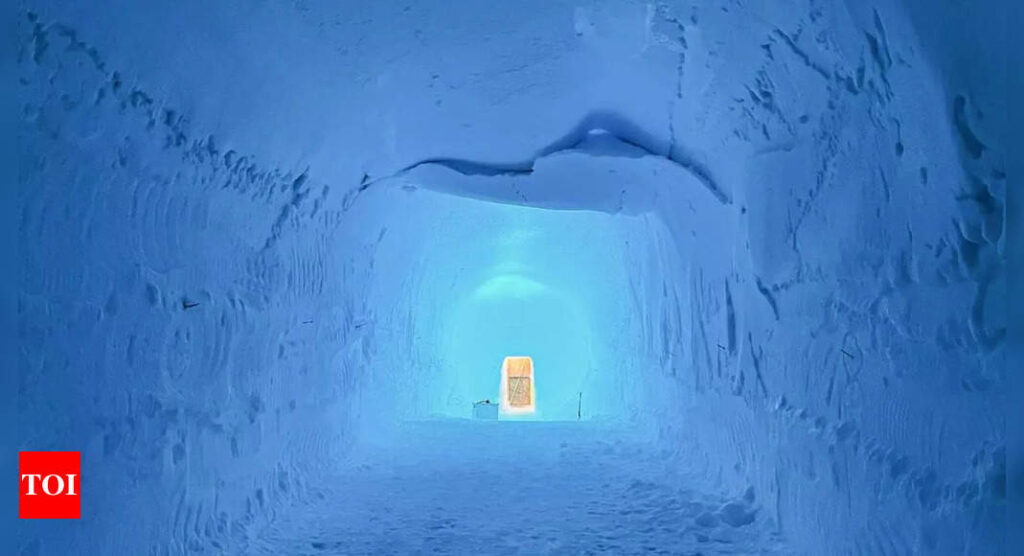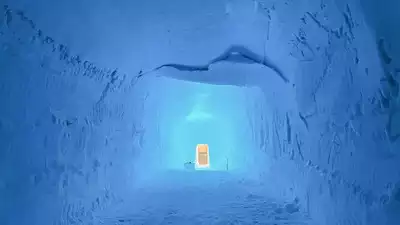
Scientists have made an awe-inspiring finding beneath the Greenland Ice Sheet through thousands of ice quakes that were undetected before now. These weak seismic activities are somewhat comparable to earthquakes but occur deep within the ice streams, giving good information about the very complex movements of the frozen rivers on the island. This can completely change the way experts think about the ice melt, raised sea level, and the larger ramifications of global warming. Since Greenland’s ice sheet is so integral to the global climate system, this study’s findings could quite surely put new twists on how predicting the future of the environment changes.
Scientists record ice quakes inside Greenland Ice Sheet, revealing new insights
This is the first time that scientists have recorded thousands of tiny ice quakes deep inside the Greenland Ice Sheet. Weak but very informative, these quakes will further enhance the understanding of the behaviour of ice in extreme conditions as per reports. Studies have recently shown such ice quakes propagating hundreds of meters into ice streams triggering each other. This advance puts into evidence the heterogeneous and dynamic processes happening in this large ice mass across the globe.
Ice quakes: What are they, and why are they important?
Ice quakes resemble seismic events, like earthquakes; however, they occur resulting from ice fractures on a pair of slabs of ice pressed against each other. These events occur deep underneath ice streams as ice rivers move, crack, or slip. The newly recorded ice quakes might be holding secrets as to how the ice sheets are moving and how they translate to rising sea level, which is the fundamental aspect of impacts characterized by global warming and climate change.
How does this discovery change climate studies and sea level prediction?
The new ice quakes are believed to revolutionize the methodology for ice melting monitoring and sea level rise tracking. Greenland’s ice sheet, along with itself, is one of the largest ice masses on the planet, and therefore essential to the global water cycle. Understanding how the ice sheets move and fracture aids scientists in getting a better estimate of future sea level rises and thereby amounts of climate change.
Greenland ice sheet reveals hidden ice quakes, impacting climate studies
The ice sheet of Greenland covers nearly 80% of the surface of the landmass. The second-largest ice sheet on the planet is about 1.67 kilometers thick on average and reaches up to 3 kilometers thick in places. This ice sheet has existed for more than 18 million years, and any behavior exhibited by this ice sheet has critical importance for global climate studies.
How scientists discovered the ice quakes?
The most cutting-edge technology for understanding the ice quakes would be lowering a fiber-optic cable into a borehole drilled 1.7 miles (2.7 kilometers) deep into the Northeast Greenland Ice Stream, the largest of Greenland’s frozen rivers. The research effort was led by Professor Andreas Fichtner from ETH Zurich and published in the journal Science under the title of “Hidden Cascades of Seismic Ice Stream Deformation.”
Before, ice quakes were not detected because they could not reach the surface, where the volcano’s debris under 900 meters of ice blocked the effects of an eruption of Mount Mazama, in what is now Oregon, USA, approximately 7,700 years ago. Such a layer was completely unknown to researchers until then-it turned out to have very serious consequences in blocking any detection of the ice quakes.
New discovery on ice streams’ movement enhances climate change models
These findings would go well against the previously held views about the movement of ice streams. Formerly, it was believed that ice streams flowed smoothly, like viscous honey. The current discovery reveals that the ice streams move actually in a “stick-slip,” when it switches often between slow movement and a rapid sudden shift. This understanding enhances the way scientists model ice dynamics that will, in turn, improve predictions with regard to sea-level rise and climate change.
Also Read | Cloudgazing…on Mars! NASA’s Curiosity rover captures beautiful colourful clouds drifting over Mars | Watch




